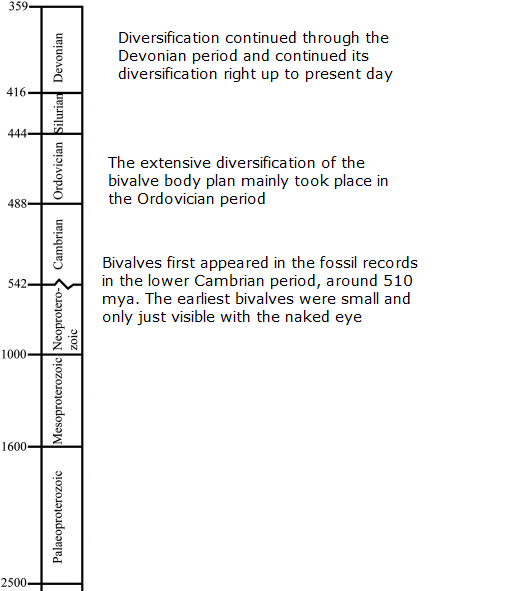Brief Summary
Distribution
Physical Description
Size
Identification Resources
Ecology
Local Distribution
Crypsis
Life History & Behaviour
Feeding
Burrowing
Chemosensory Perception
Reproduction and Larval Biology
Anatomy & Physiology
Morphology
Evolution & Systematics
Fossil History
Phylogeny
Biogeographic Distribution
Conservation & Threats
Human Threats
References & Links
| FOSSIL HISTORY
Bivalves have an extensive history in the fossil record, stretching back to the lower Cambrian period (roughly 510 million years ago). The huge diversification of the bivalve body plan didn't begin until the lower Ordivocian. The diversification continued through the next two major extinction events (end of Permian and the end of the Cretaceous period). A major evolutionary leap for the bivalves was the evolution of complex gill structures which allowed the ancestors of M. rufescens to switch to filter feeding from deposit feeding. This shift played a major role in the diversification of the bivalves. Through increasing the overall surface area of the gill structure by increasing it's overall length, as well as complexity food particles were able to be sorted and processed a lot more easily than when the gill structures were relatively small.
 |
|